- Home
- Prelims
- Mains
- Current Affairs
- Study Materials
- Test Series
Dec 9, 2021
DECISION TO LINK PRICE OF COKING COAL TO IMPORTED DRY FUEL UNDER CONSIDERATION: GOVT
The recently formed Inter-Ministerial Committee, headed by the Additional Secretary, Ministry of Coal has submitted it recommendations to strategise augmentation of coking coal production in India.
The main recommendations of the Committee:
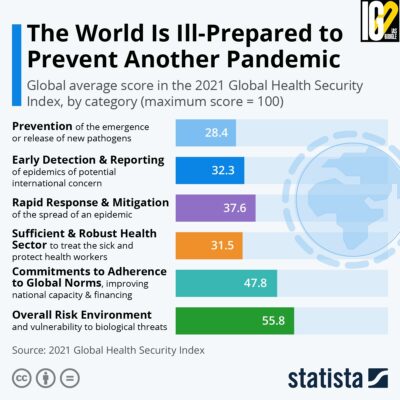

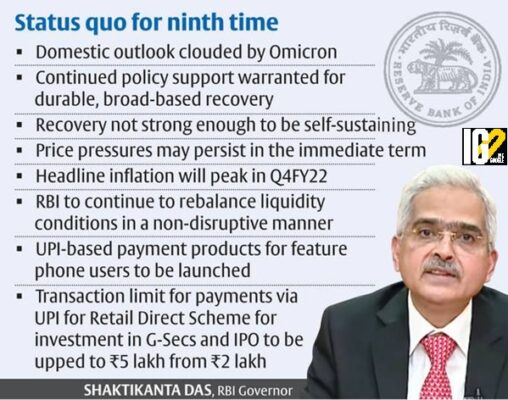




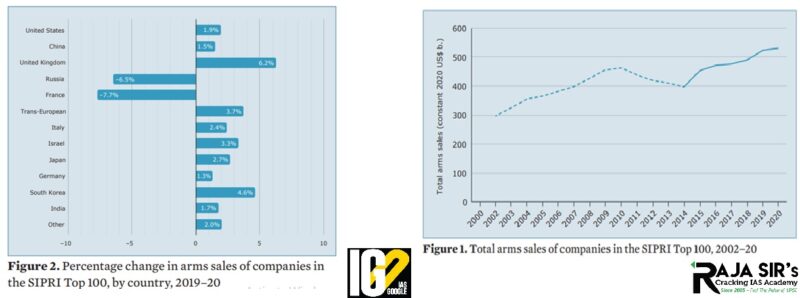

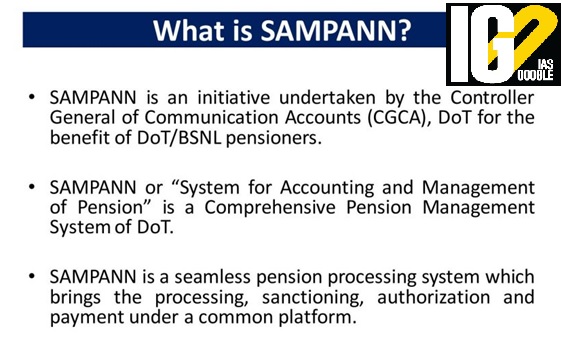

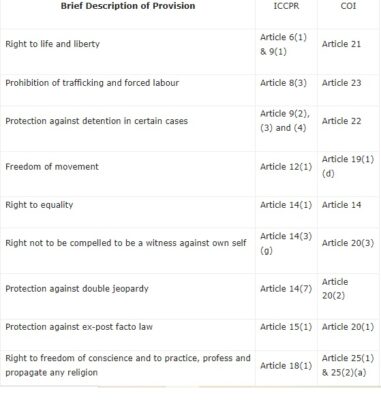
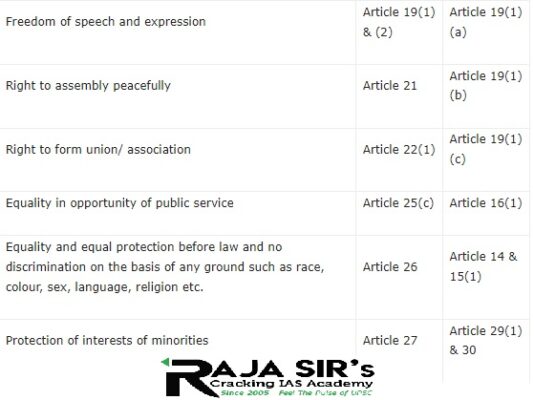

- Identify additional coking coal blocks for production by Coal India Ltd (CIL) and private sector
- Adopt existing advance technology for beneficiation of coking coal.
- Developing policy framework for disposal of washery rejects.
- Allocate coking coal linkages by CIL to private washeries, setting up of coking coal washeries on aggregator model basis.
- Formulate import parity-based pricing mechanism for domestic coking coal factoring the quality parameters.
- Incentive-based framework to encourage steel sector for utilisation of domestic coking coal.
- CIL should publish mine-wise/seam-wise details of coking properties of coal on its website and purchaser may be allowed to choose from specific source.
- Tax incentives may be provided to the entities for manufacturing of underground mining machinery and entities engaged in underground mining.
- Coking coal, also known as metallurgical coal, is used to create coke.
- Coke is one of the key irreplaceable inputs for the production of steel.
- Coke quality is largely influenced by coal rank, composition, mineral content and the ability to soften when heated, become plastic, and resolidify into a coherent mass.
- Bituminous class coals that possess these properties are called “coking” coals.
- The property that sets coking coals apart from other coals is its caking ability.
- It is the specific property required in order to make coke suitable for steel making.
- It is mainly used in manufacturing of steel through blast furnace route.
- India’s domestic reserves are inadequate to meet the demand.
- Domestic coking coal is high ash coal (mostly between 18% - 49%) and is not suitable for direct use in the blast furnace.
- Majority of the country’s coking coal is being produced in
- Therefore, coking coal is washed to reduce the ash percentage and is blended with imported coking coal (<9% ash) before utilisation in the blast furnace.
- Indian steel industry fulfils 70%of its coking coal requirements through
- About 50 MT coking coal is imported by the country on an annual basis.
- To prepare an action plan to reduce import of coking coal.
- It will include exploration, enhanced production, adoption of new technologies, setting up of new coking coal washeries and enhanced R&D activities.
- This will give necessary boost to coking coal production in our country and strengthen in-house capabilities.
- It will help in substantial reduction of coking coal imports and will lead us on a path to Atmanirbhar Bharat.
- Coking coal has the potential to emerge as one of the important new business areas for CIL and other private sector players.
- Auction of commercial mining on Revenue Sharing Mechanism was launched.
- A total of 28 coal mines have been successfully auctioned.
- The Ministry of Coal has amended Mineral Concession Rules, 1960with a view to allowing sale of coal or lignite, on payment of additional amount, by the lessee of a captive mine.
- Single Window Clearance portal has been launched.
- It is a unified platform that facilitates grant of clearances and approvals required for starting a coal mine in India.
- Coal India Ltd. has envisaged 15 Projects identified with a Capacity of about 160 MTPA (Million Tonnes per Annum) to be operated by Mine Developer cum Operator mode.
- Increasing domestic production of coal through allocation of more coal blocks.

- Countries are unprepared for future pandemics and epidemics.
- The world's overall performance on the GHS Index score slipped to 9 (out of 100).
- India’s GHS Index score- 42 out of 100
- No country scored above 75.9.
- 65% countries had not published and implemented national public health emergency response plan.
- 73% countries did not have the ability to provide approval vaccines and antiviral drugs.
- 155 out of 195 countries have not allocated national funds within the last three years.
- 70% of countries show insufficient health capacity in clinics, hospitals, and community health centers.
- Political and security risks have increased.
- It is the first comprehensive assessment and benchmarking of health security.
- Aim: to spur measurable changes in national health security.
- It measured the capacities of 195 countries to prepare for epidemics and pandemics.
- It has assessed countries across six categories, 37 indicators and 171 questions.
- Prevention of the emergence or release of pathogens.
- Early detection & reporting epidemics of potential international concern.
- Rapid response to and mitigation of the spread of an epidemic.
- Sufficient & robust health system to treat the sick & protect health workers.
- Commitments to improving national capacity, financing plans to address gaps, and adherence to global norms.
- Overall risk environment and country vulnerability to biological threats.
- Four of the six GHS Index categories have an average score below 40 out of 100.

- The booster shot is an additional dose after the protection provided by the original shot(s) has started to decrease over time.
- It is means of strengthening one’s immune system against a particular pathogen.
- It may be the same original vaccine, in which case its goal is to increase the magnitude of protection by producing more antibodies.
- The booster is designed to help people maintain their level of immunity for longer.
- Booster shot gives the memory cells the crucial signal to re-engage when the virus attacks.
- It is originally called a third dose, which is given to people with moderately or severely compromised immune systems to improve their response to the initial vaccine series.
- The term “third dose” was used to refer to additional doses for the two mRNA
- People with weakened immune systems might not develop enough immunity after vaccination with two doses of a vaccine.
- Therefore, an additional dose might improve their protection against the novel coronavirus.

- The repo rate has been kept unchanged at 4%.
- Repo rate is the rate at which the RBI lends short-term funds to banks
- The reverse repo rate remains the same at 35%.
- Reverse repo rate is the rate at which the RBI borrows from banks.
- The Marginal Standing Facility (MSF)also remain unchanged at 25%.
- Marginal standing facility (MSF) is a window for banks to borrow from the Reserve Bank of India in an emergency when inter-bank liquidity dries up completely.
- The Marginal Standing facility allows banks to borrow money with an interest rate above the repo rate.
- RBI retains CPI (Consumer price index) inflation projection at 5.3% in 2021-22.
- RBI retains the gross domestic product (GDP) growth target at 9.5% in FY22.
- Monetary policy refers to the policy of the central bank with regard to the use of monetary instruments under its control to achieve the goals specified in the Act.
- The Reserve Bank of India (RBI)is vested with the responsibility of conducting monetary policy.
- This responsibility is explicitly mandated under the Reserve Bank of India Act, 1934.
- Monetary Policy Committee is a six-member committee constituted by the Central Government by notification in the Official Gazette.
- Section 45ZBof the amended RBI Act, 1934 provides for formation of such a committee.
- The setting up of a committee to decide on Monetary Policy was, by latest, proposed by the Urjit Patel Committee.
- Suggestions for setting up a Monetary policy committee was first proposed by YV Reddy committee in 2002, then Tarapore committee in 2006, Percy Mistry committee in 2007, Raghuram Rajan committee in 2009 and then Urjit Patel Committee in 2013.
- The Reserve Bank of India Act, 1934 was amended by Finance Act (India), 2016 to constitute MPC to bring more transparency and accountability in fixing India's Monetary Policy.
- The first meeting of the MPC was held on October 3, 2016.
- The meetings of the Monetary Policy Committee are held at least 6 times a year(specifically, at least once BIMONTHLY).
- Governor of RBI is the ex- officio chairman of the committee
- Deputy Governor of the Bank in charge of monetary policy
- Executive director of the Bank in charge of monetary policy
- Three members nominated by the Government of India.
- Nominated members hold office for a period of four years from the date of appointment.
- They are not eligible to be re-appointed.
- The MPC determines the policy interest rate required to achieve the inflation target.
- It aims at setting the policy (repo) rate based on an assessment of the current and evolving macroeconomic situation.
- It modulates liquidity conditions to anchor money market rates at or around the repo rate.

- The Arab League, officially the League of Arab States, is a union of Arabic-speaking African and Asian countries.
- It includes Northern, Western & Eastern Africa and Western Asia.
- Administrative center: Cairo, Egypt
- Formed in: Cairo, 22 March 1945
- Egypt, Jordan, Lebanon, Iraq, Syria, Saudi Arabia and Yemen are founding members.
- Aim:
- To draw closer the relations between member states and co-ordinate collaboration between them.
- To safeguard their independence and sovereignty.
- To consider in a general way the affairs and interests of the Arab countries.
- Each member’s representative has one vote, irrespective of their country’s size.
- The council meets twice a year, in March and September.
- They may convene a special session at the request of two members.
- India’s export of processed food products has witnessed a growth of 26.51% in Rupee term during April-February (2020-21) as compared to the same period during the previous year (2019-20).
- Total value of the export of processed products was Rs. 43,798 crores during April-February 2021.
- For boosting agricultural and processed food products exports, Agricultural and Processed Food Products Export Development Authority (APEDA) initiated a series of measures that include:
- Virtual buyer-seller meet
- Product promotion meeting
- Creation of products specific export promotion forums
- Ensuring market access through organizing exports promotion activities
- Major processed food products exported from India include pulses, processed vegetables, processed fruits, and juices.
- Agriculture and Processed Foods Export Promotion Scheme: Financial assistance under this Scheme of APEDA for the Medium-Term Expenditure Framework was provided for infrastructure Development, Quality Development and Market Promotion.
- Export promotion of GI products: APEDA has taken initiative to promote exports of products which registered with Geographical Indications (GI) certification in India.
- Opening up market access &export promotion in international markets: APEDA has played an important role in opening up of new market for agricultural products in the recent past such as Canada, China, South Korea, Taiwan, Portugal, Indonesia, Iran etc.

- Ambergris is a waxy substance that originates from the digestive system of the protected sperm whales.
- It means gray amber in French.
- Mistakenly called whale vomit, it is actually excreted by the Sperm Whales.
- Formation:
- The substance originates in the intestines of male sperm whales after feasting on squid whose hard, pointy beaks scrape the whales’ guts.
- It has a very strong faecal odour combined with a strong marine odour.
- The freshly passed ambergris is a light yellowish substance and is fatty
- It turns waxy and gets red brownish over time, sometimes with shades of gray and black in colour.
- It attains a mild, earthy, sweet smell but still with notes of mild marine odour.
- It is also called ‘floating gold’ or ‘treasure of the sea’ because of its high demand in the international market.
- It is used to produce perfumes which have notes of musk.
- It is used to flavor food, alcoholic beverages and tobacco in some cultures in the past
- It is considered as an aphrodisiac and is used in some medicines.
- It is also used to make spice and potions in some countries.
- There is a ban on possession and trade of ambergris in countries like the USA, Australia and India.
- It is a tradable commodity with limitations in several other countries
- There is a freeze on commercial whaling and a ban on international trade of whale products
- Iceland, Japan and Norway conduct commercial whale hunts.
- Sperm whales live in a stable and complex matrilineal society.
- It is largest of the toothed whales.
- The teeth on the bottom jaw can grasp large squid or fish unlike other large whales, which filter smaller, denser prey through baleen.
- They are usually found in deep oceanic waters and can be observed closer to the shore around islands.
- They are hunted for their valuable whale oil, which was widely used to fuel lamps and make soap.
- Whale meat is served as traditional food in many parts of the world.
- Global IUCN status: Vulnerable
- Mediterranean sperm whale (Genetically distinct): Endangered
- The sperm whales are a protected species under Schedule 2 of the Wildlife Protection Act.
- The possession or trade of any of its by-products, including Ambergris and its by-products, is illegal under provisions of the Wildlife Protection Act, 1972.

- It is the world’s fastest supersonic cruise missile being developed by BrahMos Aerospace.
- BrahMos Aerospace-It is a joint venture between Defence Research and Development Organisation (DRDO) of India and NPO Mashinostroeyenia (NPOM) of Russia.
- Aim-Development, production and marketing of the supersonic cruise missile.
- It is named after- the Brahmaputra River in India and the Moskva River in Russia.
- It has a flight range of up to 290km
- It can reach a maximum speed of Mach 3.
- The missile can be installed on ships, submarines, aircraft and ground vehicles.
- It operates on ‘Fire and Forget’
- It is a type of missile guidance which does not require further guidance after launch.
- It will provide employment to the poor’s, resulting in increase in income by at least 20% at household level.
- To provide employment and income opportunities to the BPL families, hatchery and other households who fall under APL classification.
- To reduce the import of chicken meat from outside.
- To motivate the people towards scientific poultry farming and hatchery through imparting training and exposure.
- Jnanapith is the highest literary award in India.
- It was instituted in 1961.
- It is awarded annually for the best creative literary writing to writers in any of the 22 scheduled languages recognized in the Indian Constitution.
- The prize carries a cash award, a citation, and a bronze replica of Vagdevi (Saraswati).
- It is sponsored by the cultural organization Bharatiya Jnanpith.

- Arms sales increased even as the global economy contracted by 3.1 per cent.
- The Indian companies showed an increase of 1.9% compared to 2019. They are:
- Hindustan Aeronautics Limited (HAL), ranked 42nd, increased by 1.5%
- Indian Ordnance Factories, ranked 60th, rose by 0.2%
- Bharat Electronics Limited (BEL), ranked 66th increased by 4.0%
- India has the smallest share among the top 11 defence manufacturing nations.
- Domestic procurement has helped to shield Indian companies against the negative economic consequences of the pandemic.
- With 41 arms companies, the USA has the highest number of companies in the top 100 worldwide.

- SIPRI is an independent international institute dedicated to research into conflict, armaments, arms control and disarmament.
- It was established in 1966, on the basis of a decision by the Swedish Parliament.
- Headquarters: Stockholm
- It provides data, analysis and recommendations, based on open sources.
- Vision
- SIPRI's vision is a world in which sources of insecurity are identified and understood, conflicts are prevented or resolved, and peace is sustained.
- undertake research and activities on security, conflict and peace;
- provide policy analysis and recommendations;
- facilitate dialogue and build capacities;
- promote transparency and accountability; and
- deliver authoritative information to global audiences.
- Bhasha Sangam is a mobile app.
- Aim:
- To give users familiarity with common expressions of daily conversation in Scheduled Indian languages.
- Enabling people to learn different languages of different states of India and come closer to their culture.
- Features:
- The app has 100+ sentences, designed on different themes that allow people to learn basic conversation in 22 Indian languages.

- Ariel (Atmospheric Remote-sensing Infrared Exoplanet Large-survey) is the third satellite in a trio of ESA’s dedicated exoplanet missions.
- The first mission, Cheops, was launched in 2019, while Plato will be launched in 2026.
- Planets that are located outside of solar system and orbit their own host star or several stars are called exoplanets.
- It will be launched in 2029.
- It is being developed to survey about 1000 exoplanets in visible and infrared wavelengths to study the formation and evolution as well as the composition of the exoplanets.

- It is a comprehensive Pension Management system of Department of Telecommunications, Ministry of Communications.
- Aim- To improve the service delivery to pensioners by providing a single window setup.
- It is a seamless online pension processing and payment system under a common platform.
- Timely settlement of pension cases.
- Improved reconciliation/auditing and ease of accounting.
- Provides direct credit of pension into the bank accounts of pensioners.
- Helps in processing, sanctioning, authorization of payments.
- Provision of e-Pension Payment Order.
- Enables access to key information like payment history.
- Online submission of grievances and timely SMS alerts.
- Theme of 2021: “Orange the World: End Violence against Women Now”.

- Unequal and unjust socio-economic systems.
- Gender inequality
- Inadequate healthcare
- Lack of law enforcement
- Widespread illiteracy.
- The UDHR is a document which acts as a global road map for freedom and equality, protecting the rights of every individual.
- It was adopted by United Nations on 10 December 1948,
- Its adoption recognised human rights to be the foundation for freedom, justice and peace.
- It has 30 rights and freedoms including the right to be free from torture, the right to freedom of expression, the right to education and the right to seek asylum.
- It includes civil and political rights such as the rights to life, liberty and privacy.
- It also includes economic, social and cultural rights such as the rights to social security, health and adequate housing.

- It provides various universal human rights standards, that must be promoted and protected in all countries.
- It continues to serve as a foundation for national and international laws and standards.
- The Human Rights Council is an inter-governmental body within the United Nations.
- It was established in 2006.
- Objective: Strengthening the promotion and protection of human rights around the globe, addressing situations of human rights violations and make recommendations on them.
- The Council is made up of 47 United Nations Member States, elected by the UN General Assembly.
- It replaced the former Commission on Human Rights.
- The Council act as a forum for dialogue among States, with input from other stakeholders.
- It may issue resolutions calling on States to take specific actions or uphold certain principles to investigate or monitor questions of concern.
- It has created the mandates of various special procedures.
- The special procedures are experts appointed to monitor human rights in specific countries with serious human rights problems.
- The Council manages the Universal Periodic Review, a process through which each UN Member State’s overall human rights record is reviewed.

- Human rights are the basic rights available to any human being by virtue of his birth in human race.
- The Protection of Human Rights Act, 1993defines Human Rights as:
- “Human rights” means the rights relating to life, liberty, equality and dignity of the individual guaranteed by the Constitution or embodied in the International Covenants and enforceable by courts in India”.
- The Constitution of India guarantees basic human rights to each and every citizen of the country.
- Many of the civil and political rights are contained in the International Covenant on Political and Civil Rights (ICCPR), 1966.
- India has signed and ratified the ICCPR.
- They are also mentioned in Part III of the Constitution of India.

- The International Covenant on Economic, Social and Cultural Rights (ICESCR) is a multilateral treaty which focuses on social and cultural rights like food, health, education, shelter etc.
- India ratified this covenant on April 10, 1979.
- Most of the provisions in this covenant are found in Part IV (DPSPs) of the Indian Constitution.
- The government and civil society groups need to gear up for a sustained campaign against this practice.
- Both law enforcement and awareness drives engaging traditional leaders, women’s groups, Panchayati Raj Institutions, frontline workers must be ensured in these areas.
- Building rationalistic thoughts and scientific temper should be a part of the curriculum at different levels of education.
- There is a need for a national law regarding witch-hunting practitioners and mob violence against targeted families.
- States need to build up on different strategies to address the underlying issues of witchcraft.
- The Integrated Child Development Services and Integrated Child Protection Scheme structure should be used to address cases related to violence during witch-hunts.
- It is the highest environmental honour of United Nations Environment Programme (UNEP).
- It is a successor to UNEP's Global 500 Roll of Honour.
- It recognizes leaders from government, civil society and the private sector whose actions have a transformative impact on the environment.
- Theme of 2021- UN Decade on Ecosystem Restoration
- Inspiration and Action
- Policy Leadership
- Entrepreneurial Vision
- Science and Innovation.









 Latest News
Latest News
 General Studies
General Studies